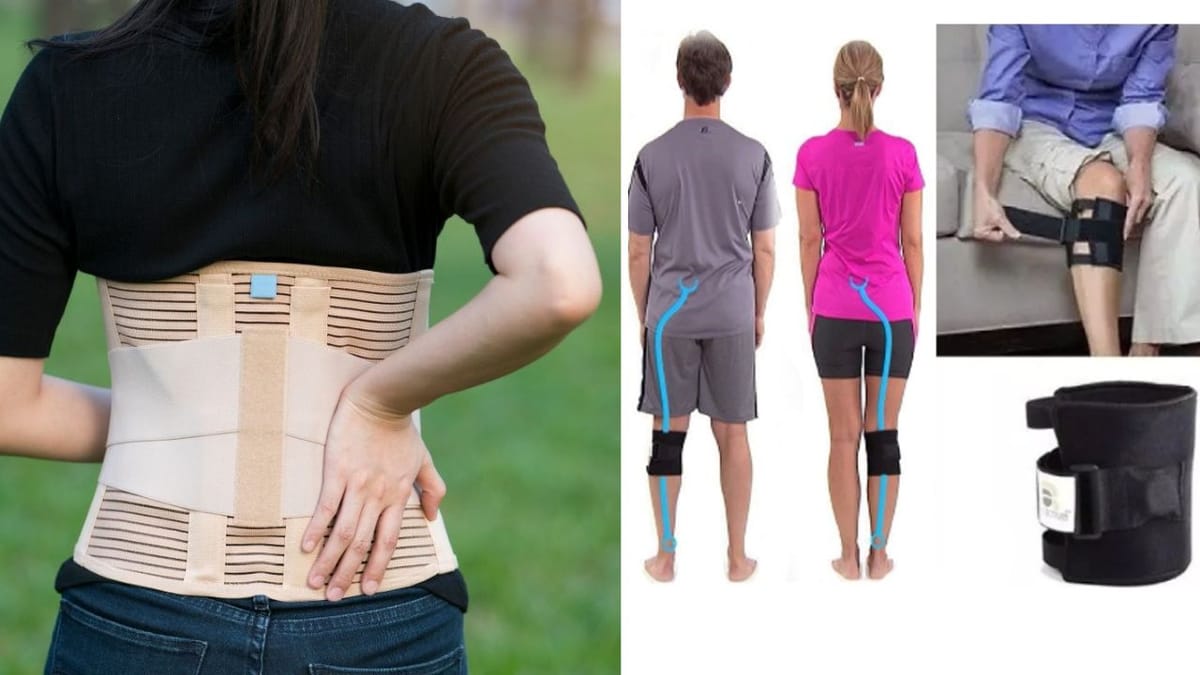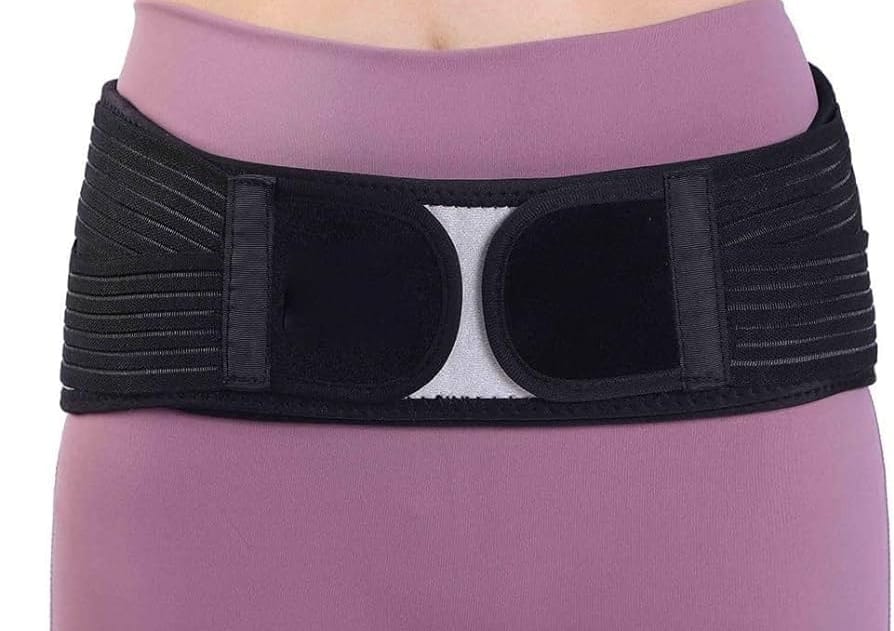Understanding Sciatica Braces: A Comprehensive Guide
When choosing a brace, consider one that is adjustable, comfortable, and tailored to your specific needs to enhance mobility and alleviate discomfort.

Sciatica can be a real pain in the back, quite literally. For those who suffer from this often debilitating condition, finding relief is a top priority. One of the solutions that has gained popularity over the years is the use of a sciatica brace. In this comprehensive guide, we'll explore what sciatica braces are, how they work, and who can benefit from them.
Key Takeaways:
- Sciatica braces can provide pain relief and improve mobility for individuals suffering from sciatica.
- It's important to choose the right type of brace for your specific condition and to use it as directed by a healthcare professional.
- Consistent use of a sciatica brace, in conjunction with other treatments, can lead to significant improvements in daily functioning.
What is Sciatica?
Sciatica is a term used to describe pain that radiates along the path of the sciatic nerve, which extends from the lower back through the hips and buttocks and down each leg.
Typically, sciatica affects only one side of the body and can vary in intensity from a mild ache to a sharp, burning sensation or excruciating discomfort. Sometimes it can feel like a jolt or electric shock and can be worsened by prolonged sitting or sudden movements.
The Role of Sciatica Braces
A sciatica brace is a device worn around the lower back and, at times, extending to the thighs. It is designed to provide support and alleviate pressure on the sciatic nerve. By stabilizing the affected area, a brace can reduce pain and inflammation, allowing for increased mobility and comfort during daily activities.
Types of Sciatica Braces
There are several types of sciatica braces available, each designed to target specific needs and symptoms. Lumbar-sacral orthoses (LSO) are one common type, providing support to the lower back and promoting proper alignment.

Another type is the trochanteric belt, which is worn lower around the hips to relieve pressure on the sciatic nerve directly.

How to Choose the Right Brace
Selecting the right sciatica brace involves considering the severity of your symptoms, your lifestyle, and any recommendations from your healthcare provider. It's essential to get a brace that fits well and provides the appropriate level of support without restricting movement too much or causing discomfort.
The Benefits of Using a Sciatica Brace
Wearing a sciatica brace can offer several benefits, including reduced pain, improved posture, and prevention of further injury. It can also aid in the healing process by limiting movements that might exacerbate the condition.
When to Wear a Sciatica Brace
It's generally recommended to wear a sciatica brace during activities that are likely to trigger pain or when experiencing a flare-up of symptoms. However, it's crucial not to become overly reliant on the brace and to engage in strengthening exercises.
The right brace can make a big difference in your daily life, but it's important to continue with your treatment plan as prescribed by your healthcare provider.
Incorporating a Brace into Your Treatment Plan
A sciatica brace should be part of a comprehensive treatment plan that includes physical therapy, exercise, and possibly medication. It's not a standalone solution but can significantly enhance the effectiveness of other treatments.
Understanding the Limitations of Braces
While sciatica braces can be helpful, they are not a cure-all. It's important to have realistic expectations and understand that a brace is a tool to manage symptoms, not a permanent fix.
Tips for Wearing a Sciatica Brace
To get the most out of your sciatica brace, ensure it's worn correctly and for the appropriate duration. It's also important to maintain good posture and engage in regular physical activity to strengthen the muscles supporting the spine.
Adjusting to Life with a Brace
Initially, wearing a sciatica brace may feel restrictive or uncomfortable. However, most people adjust quickly and notice a significant improvement in their quality of life due to reduced pain and increased mobility.
If you're experiencing pain when you remove the brace, there's a good chance it's not the right size. For this reason, it's important to get a brace that fits well and provides the right level of support.
Caring for Your Sciatica Brace
Proper care of your brace will extend its life and ensure it continues to provide the necessary support. Follow the manufacturer's instructions for cleaning and maintenance, and inspect the brace regularly for signs of wear and tear.
Combining Braces with Other Therapies
For the best results, combine the use of a sciatica brace with other therapies such as heat/ice therapy, massage, or acupuncture. This multi-faceted approach can help address the condition from different angles.
Real-Life Examples
Many individuals have found relief from sciatica symptoms through the use of a brace. Real-life success stories can provide encouragement and insight into how a brace might benefit your situation.
Talk to your healthcare provider if you have questions about the best type of brace to use.
Expert Opinions on Sciatica Braces
Healthcare professionals often recommend sciatica braces as part of a treatment plan. Their expert opinions can guide you in making an informed decision about whether a brace is right for you.
The Psychological Impact of Sciatica Relief
Reducing pain and improving mobility can have a significant positive impact on mental health. The relief provided by a sciatica brace can lead to a more positive outlook and increased overall well-being. In some cases, a brace can also help to reduce the risk of injury and further damage to the spine.
Future Innovations in Sciatica Treatment
The field of orthotics is continually evolving, with new designs and materials being developed to improve the effectiveness of sciatica braces. Staying informed about these innovations can help you find the most advanced solutions for your condition.
Where to Find Sciatica Braces
Sciatica braces are available through medical supply stores, online retailers, and sometimes directly from healthcare providers. It's important to choose a reputable source to ensure you're getting a quality product.
Insurance and Cost Considerations
The cost of a sciatica brace can vary, and insurance coverage may depend on the type of brace and the specifics of your policy. It's worth investigating these factors before making a purchase.
Summary
Sciatica braces are a valuable tool for managing the pain and discomfort associated with sciatica. By providing support and stability to the lower back and surrounding areas, these braces can help improve quality of life and facilitate a more active lifestyle. It's important to choose the right type of brace, use it as part of a comprehensive treatment plan, and maintain realistic expectations about its capabilities. With the right approach, a sciatica brace can be a game-changer for those struggling with this condition.
FAQs
Q: Can a sciatica brace cure my sciatica?
A: No, a sciatica brace is not a cure for sciatica. It is designed to manage symptoms and provide relief as part of a comprehensive treatment plan.
Q: How long should I wear my sciatica brace each day?
A: The duration for wearing a sciatica brace can vary depending on individual needs and healthcare provider recommendations. It's typically worn during activities that might cause pain or when experiencing a flare-up.
Q: Will wearing a sciatica brace weaken my back muscles?
A: If used correctly and not relied upon exclusively, a sciatica brace should not weaken your back muscles. It's important to also engage in exercises that strengthen the back to maintain muscle tone and support.
